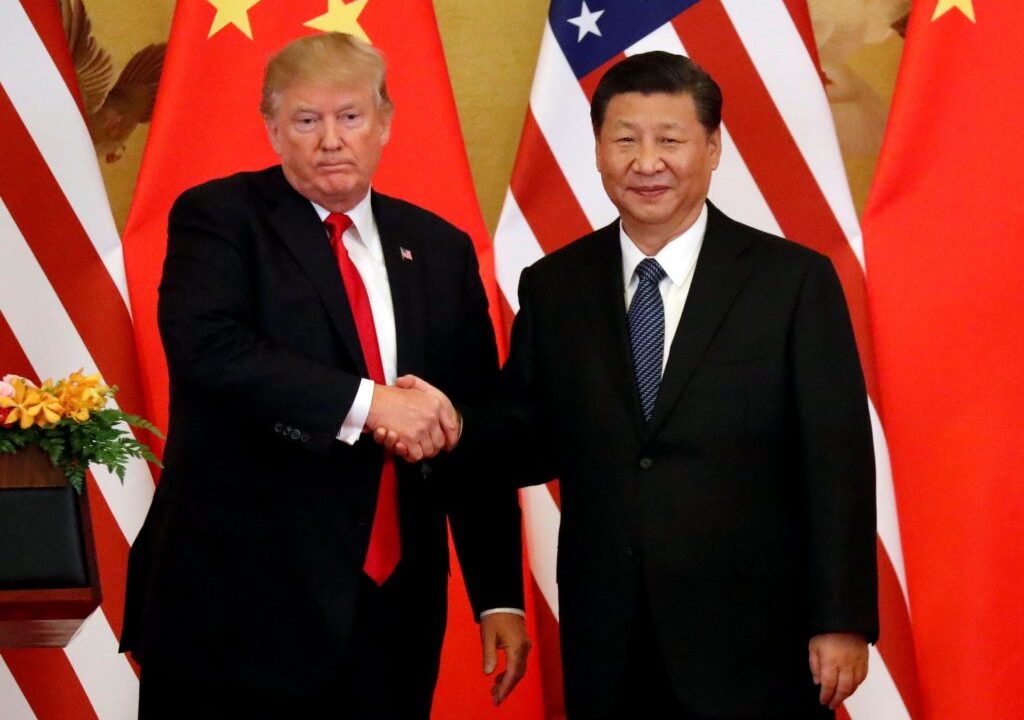Trump Disrupts China’s Trade Show
IT’S COMMON KNOWLEDGE that the Chinese play the long game.
It’s also becoming common knowledge that President Donald Trump plays to win — or doesn’t get in the game.
Just ask Canadian Prime Minister Justin Trudeau.
Experts on China believe their long-ball strategy gives the communist regime a perennial upper hand when competing with western governments, whose financial houses and political backers are petrified of any short-term market fluctuations.
Enter Trump, the world’s great disruptor, daring to challenge the biggest ruse of our lifetime expounded by the elitist ownership class: “open borders and open trade are good for you.”
Trump took a seat at the China trade table, surveyed the game, sized up his adversary and determined that he had $375 billion more chips than his Chinese counterparts.
China has been bluffing the United States on bad trade deals and product dumping since President Richard Nixon paid the country a visit in 1972.
Upon entering the World Trade Organization, the Chinese made stealing U.S. intellectual property a business rite of passage. The WTO is nothing but another globalist fantasy concoction designed to permanently commoditize U.S. workers while telling them it’s the road to world peace.
When Trump first threatened China’s President Xi Jinping with tariffs to level the playing field, Xi probably assumed it was an empty threat. He didn’t understand who he was dealing with.
After months of Trump telling Beijing, he was serious, Treasury Secretary and Goldman Sachs graduate Steve Mnuchin, in cahoots with his lower Manhattan and fellow Sachs alum economic adviser Gary Cohn, told Trump not to worry.
The West Wing saboteurs told Trump they got a trade concession: The Chinese would buy more soybeans at some future date.
The next day, the usual Republican open-trade orthodoxy apologists claimed victory and said: “move along now, there’s nothing to see here.”
But then a strange thing happened: Trump disputed Mnuchin’s Chamberlain-style peace-in-our-time victory and doubled down. He called China’s bluff, and the whole world was caught by surprise.
The Bejing stock market tumbled 32 percent. Chinese investors knew their gig was up.
The dire calls of gloom and doom from the typical Wall Street exploiters was the next step in stopping the permanent take-down of the globalist cheap labor hoax. We heard cries of impending financial consumer pain, such as: “You’ll pay 1 cent more per can for a six-pack of PBR” and “Your iPhone will cost $10 more!”
When that fell flat, the bankers and hedge-fund managers, whose average Wall Street salary last year was $422,500, bemoaned the coming economic Armageddon of all time.
Instead, the U.S economy is booming while setting new highs every month in virtually every category: 4.2 percent GDP growth, record numbers in job creation and higher wages. All these results have led to soaring consumer and business confidence.
Trump has maintained that he’s tired of the United States being taken advantage of. “The U.S. is no longer the piggy bank of the world,” Trump triumphantly declared in September.
The U.S. trade deficit with China in 2017 was $375 billion. That’s $375 billion more U.S. cash going to China than flows into the United States.
China’s economy is now dependent on U.S. hard currency, and the Chinese covet the buying power of the American consumer. China desperately needs the United States to buy its exports. The U.S. economy can function just fine without Chinese trade, as it did for 200 years.
For Americans, Trump’s China tariffs mean more manufacturing, more factories and better-paying jobs available for more U.S workers.
Trump has maintained that the United States is being ripped off by everybody — and that bad trade deals have proved disastrous for American workers, resulting in lost jobs and lower wages.
Even worse, the Chinese central government, through domestic subsidies, dumps futuristic products into the U.S. market at below-market prices in order to drive American companies out of business, with a long-term goal of cornering high-growth markets.
This is a trade dispute Trump can’t lose, and he knows it. He’s willing to impose another $276 billion in tariffs on China, approaching 50 percent of China’s total exports to the United States. China, on the other hand, has already run out of products they can put tariffs on.
President Xi thought Trump’s rhetoric was toothless. But Trump won’t blink on trade with China.
That means better salaries for American workers, not Wall Street elites.
Published for The Virginia Pilot and The Bull Elephant.


Mark
October 10, 2018 @ 3:17 pm
MAGA!
Clements Berezoski
October 12, 2018 @ 12:44 pm
Hi yes every one go vote! And keep America going forward not backward !! With the democratic that’s for sure.